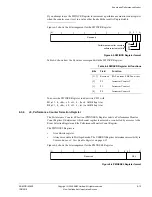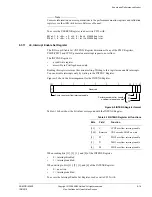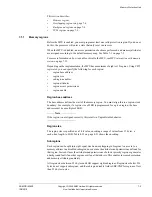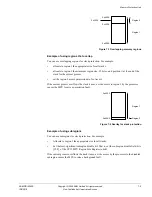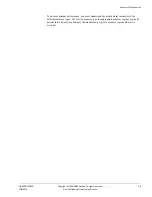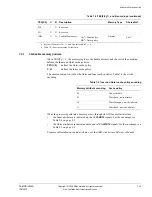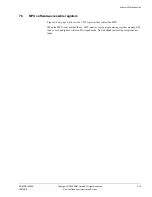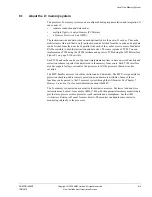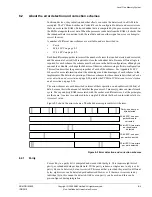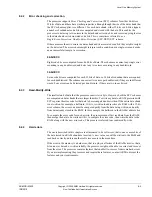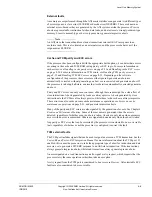
Memory Protection Unit
ARM DDI 0363E
Copyright © 2009 ARM Limited. All rights reserved.
7-6
ID013010
Non-Confidential, Unrestricted Access
Figure 7-3 Overlapping subregion of memory
7.1.3
Background regions
Overlapping regions increase the flexibility of how the regions can be mapped onto physical
memory devices in the system. You can also use the overlapping properties to specify a
background region. For example, you might have a number of physical memory areas sparsely
distributed across the 4GB address space. If a programming error occurs, the processor might
issue an address that does not fall into any defined region.
If the address that the processor issues falls outside any of the defined regions, the MPU is
hard-wired to abort the access. That is, all accesses for an address that is not mapped to a region
in the MPU generate a background fault. You can override this behavior by programming region
0 as a 4GB background region. In this way, if the address does not fall into any of the other 11
regions, the attributes and access permissions you specified for region 0 control the access.
In Privileged modes, you can also override this behavior by setting the BR bit, bit [17], of the
System Control Register. This causes Privileged accesses that fall outside any of the defined
regions to use the default memory map.
7.1.4
TCM regions
Any memory address that you configure to be accessed using a TCM interface is given Normal,
Non-shared type attributes, regardless of the attributes of any MPU region that the address also
belongs to. Access permissions for an address in a TCM region are preserved from the MPU
region that the address also belongs to. For more information, see
About the TCMs
on page 8-13.
Stack
0x4000
0x0000
Guard region
0x0800


